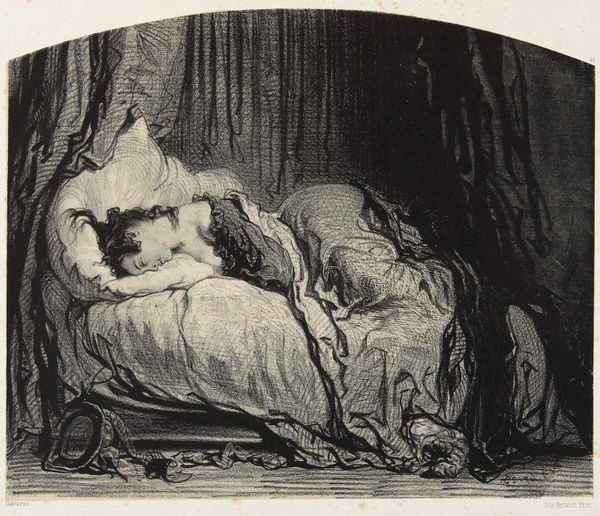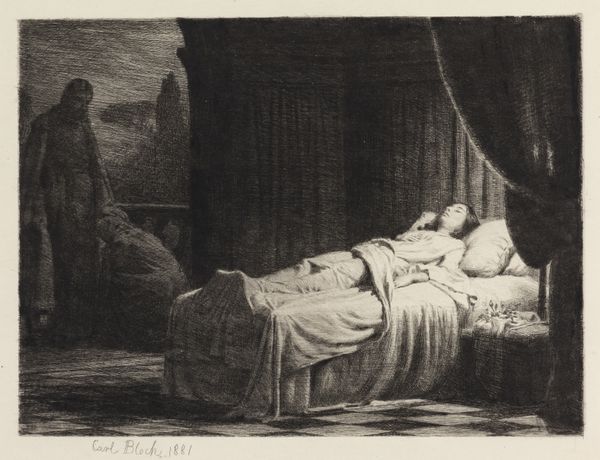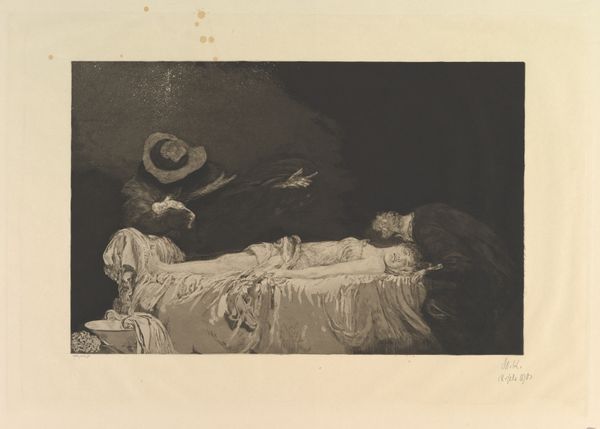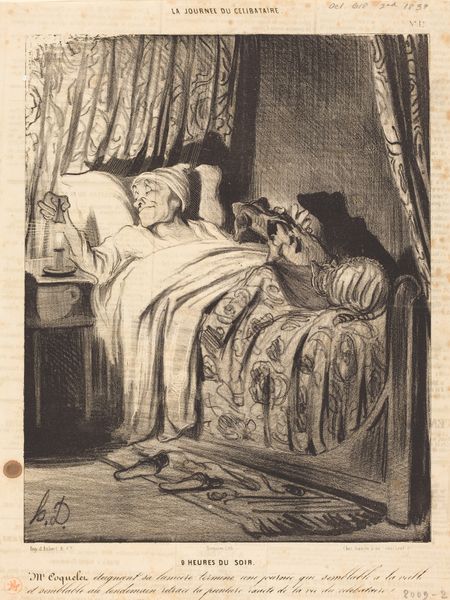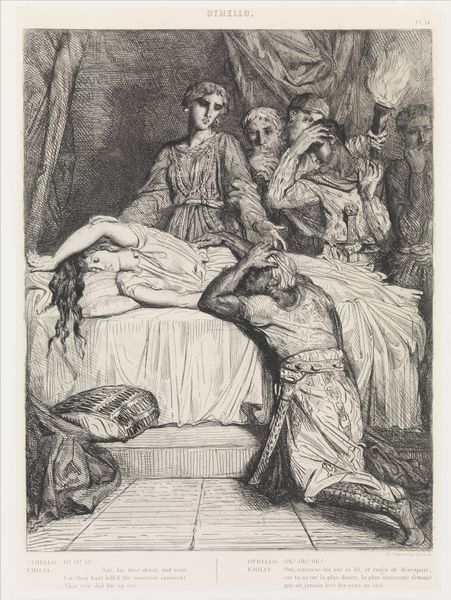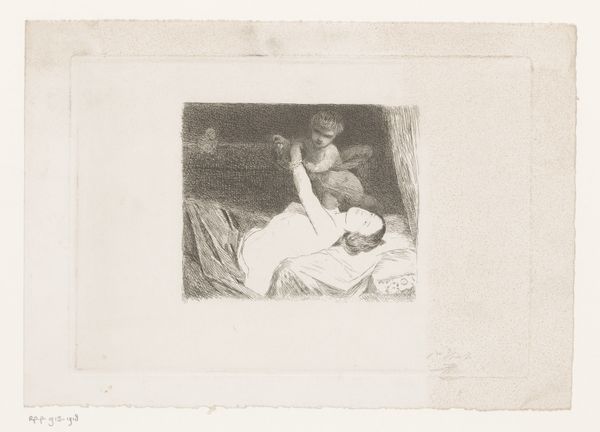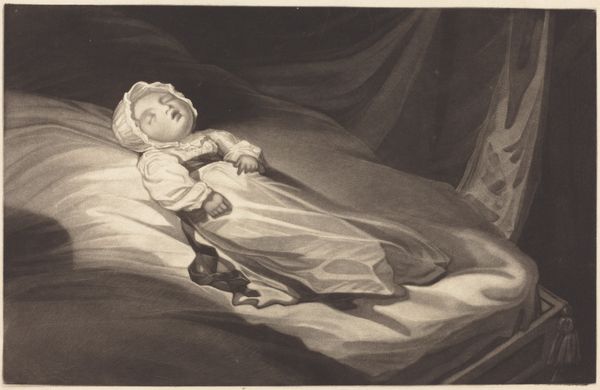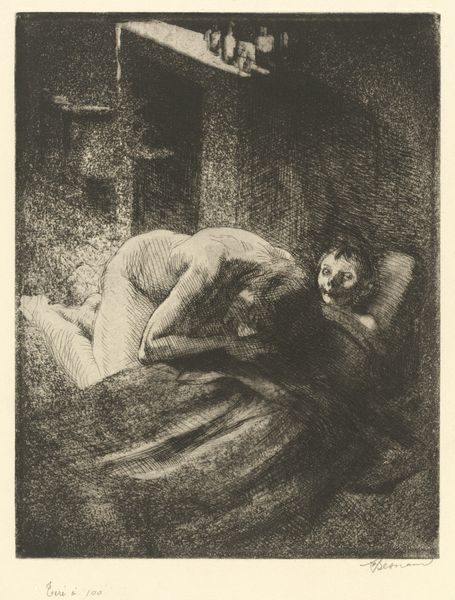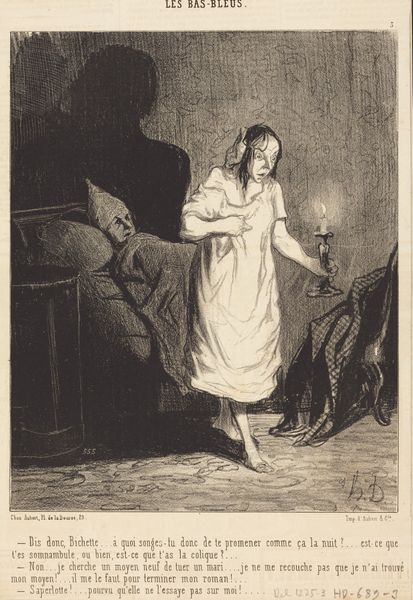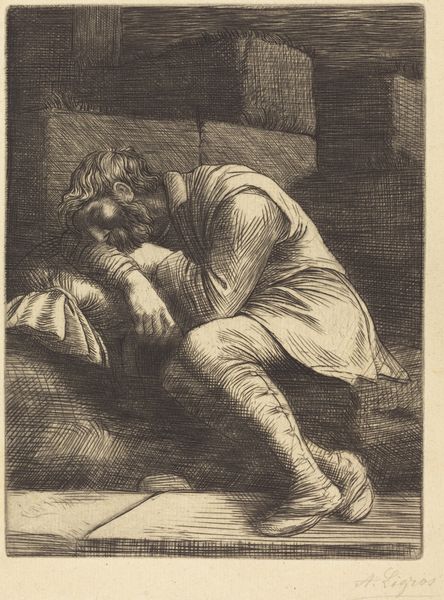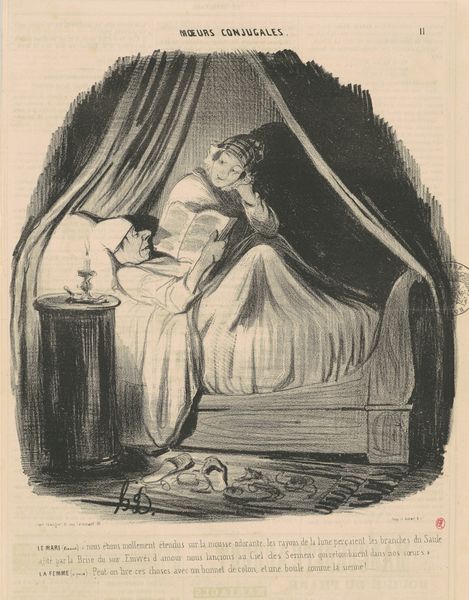
After the Pardon (Il lui sera beaucoup pardonne parce qu'elle a beaucoup danse) 1847 - 1856
0:00
0:00
Copyright: National Gallery of Art: CC0 1.0
Editor: So this is "After the Pardon (Il lui sera beaucoup pardonne parce qu'elle a beaucoup danse)" by Paul Gavarni, created sometime between 1847 and 1856. It's a print made using lithography and etching. It strikes me as rather melancholy, a somber portrait of a sleeping woman. What compositional elements stand out to you? Curator: Notice how the dense network of lines creates varying degrees of darkness, effectively modeling the figure and surrounding drapery. The artist uses the lithographic crayon with skill to produce tonal gradations mimicking those of a chalk drawing. The contrast of textures between the smooth skin and crumpled sheets is compelling. Consider also the use of light; how it illuminates the face and upper torso but gradually fades toward the heavy curtains behind. Editor: That interplay of light and shadow really emphasizes the figure's isolation. Are there ways that Gavarni's technical choices guide our emotional response? Curator: Precisely. The artist employs what we could call a ‘rhetoric of chiaroscuro,’ utilizing strong tonal contrasts to elicit a specific emotional register. The etched lines, almost frantic in their density, generate a feeling of unrest even within a seemingly still subject. Have you considered how the subject matter contributes? The slumbering woman, seemingly at peace yet rendered in such agitated lines, creates tension. Editor: It's fascinating how the lines contradict the stillness of sleep! Looking closely reveals the raw emotion within what seemed like a calm scene. Thank you. Curator: A valuable reminder that meticulous observation and an awareness of technique allow for an appreciation exceeding superficial beauty. I'm glad we were able to illuminate this for you.
Comments
No comments
Be the first to comment and join the conversation on the ultimate creative platform.
